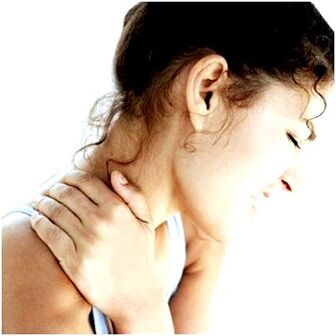
The osteochondrous process affects any spine or some at once.Lumbar and cervical vertebrae are most affected by the pathology, as they are most vulnerable to the burden of the anatomy of the human skeleton.
The result of spinal osteochondrosis in the cervical region causes the most difficulty and complications, as its neck is a rich area of neuromus highways, most of which feed the brain directly.
For this reason, clinical symptoms with cervical osteochondrosis are widely associated with brain area ischemia.In addition, the nerve root, which provides the sensitivity and activity of the motor and shoulder rope, when squeezing with the destroyed vertebrate can provide a variety of symptoms.
Below, consider the general clinic of the cervical spinal osteochondrosis.
Dizzy
Dizziness is also caused by a violation of blood flow to the inner ear organs, which ensures the body's balance.Nystagm often joins dizziness - fluctuations in the eyes to the eyes.
Shortage
This sensation arises due to irritation of the diaphragm nerves.It is a component of the cervical nerve beam and is involved in the regulation of respiratory, depth and frequency.The patient complains about the inability to breathe in the full chest.
In some cases, symptoms exacerbate shortness of breath and drowning.For the same reason, breathing stops at night and snoring.
Oxygen weakness due to respiratory problems eventually leads to increased fatigue, decreased concentration and memory problems.
Nausea
It is accompanied by air.It is also caused by problems with blood circulation in some areas of the brain and ears.Nausea is sometimes observed with vomiting -prostrated by head and body movements.The result of frequent nausea and vomiting is a decrease in appetite, weight loss, alimentary failure.
Problems with vision
"Flies" in the eyes, decreased visual acuity, fog in front of the eyes - these are all symptoms caused by the ischemia of the brain area responsible for vision.
Patients with osteochondrosis complain of lack of vision, as the lack of blood supply from the vertebral vessels is compensated by blood flow from the carbon artery system.
Glasses and therapeutic gymnastics for the eye muscles do not solve the problem, usually the vision improves after the treatment of osteochondrosis.
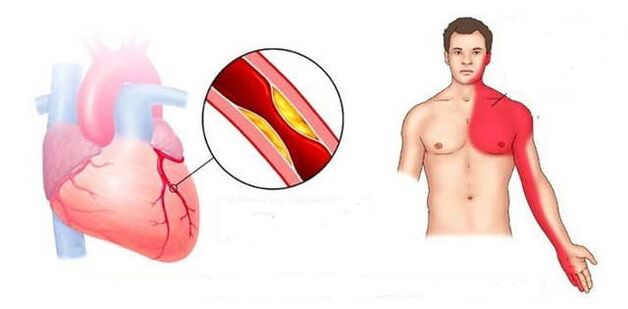
The unstable level of pressure is due to the affected blood flow in the oval brain responsible for the vascular-motor central function.
It occurs with brain artery cramps as it stops short -term blood flow along the vertebral artery.
From the patient's loss of consciousness, you can quickly be removed by placing it so that the feet are slightly higher than the head - blood flow to the brain allows one to lead to life.
After fainting attacks, problems that can be reversed with speech and movement, due to short blood flow stops, can be observed for some time.
Symptoms of green
Often it may be the only sign that shows cervical osteochondrosis.They are expressed as sweat, dryness and lumps in the throat, difficulty with swallowing.Symptoms are associated with compression of the nerve plexus responsible for the conservation of faring.It is necessary to distinguish such manifestations from the same clinic for inflammation or neoplasms.
The increase in body temperature for cervical osteochondrosis is not the most typical, rare and localized symptoms: in the cervical and collar area, with a slight redness of the skin.
The osteochondrosis clinic in the cervical spine can, first, from various levels of severity, depends on the level of pathological development, as well as during their severity, and second, to form specific syndrome.
Level i
The beginning of the degenerative process in the cartilage of the vertebral disc.Symptoms are weak, sometimes they cannot be observed at all.The first signs of cervical spinal osteochondrosis:
- discomfort in the neck, arms, shoulders, sometimes turning into pain;
- headache;
- simple restrictions on neck motor activity;
- Quickly pass through the visual deterioration;
- Reduces the skin sensitivity of the collar area.
Important: These symptoms become clearer when tilted the head.
As a rule, in the first stage of osteochondrosis of the cervical area, the patient does not go to the doctor, believing that all symptoms are associated with fatigue, stress, age, lack of sleep.
Stage II
At this stage, the highlight of the vertebrate begins, the intervertebral cracks are narrow, the collagen fiber fiber of the disc is destroyed.There are symptoms that are painful from the point of the point of compression of the nerve stem, increasing during neck movement and head turn.Here you can already suspect cervical osteochondrosis, the second stage symptoms are as follows:
- Called pain in the neck, sometimes with problems;
- Shoulder and hand skin loss is almost entirely sensitive;
- Headache is frequent, do not pass for a long time;
- Visual deterioration with "flies" in the eyes;
- ring and noise in the ear;
- upper leg muscle weakness;
- The clarity of the tendon reflex reduced;
- shooting pain with dedication under the shoulder blade;
- Feelings of bumps in the throat, problems with swallowing;
- Sleep disorders, usually insomnia.
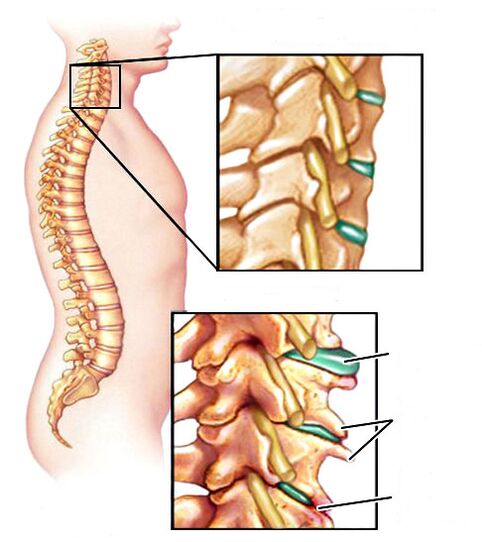
Long holding the head in one position leads to severe pain.At the developmental stage of the disease, the patient has come to the doctor for help.
Level III
The fibrous ring in the disc is destroyed, the hernia is formed.In the third stage, there are spinal deformation, displacement and vertebral dislocation due to their weak setting.Symptoms are as follows:
- pain, acute pain in the neck, collar zone, heart area;
- The sensitivity of the scalp in the back of the head, in the shoulder region, in the hands, until the absence of a complete;
- cervical spinal hernia;
- paresis and upper foot paralysis;
- Practical tendular reflexes are not observed.
This is a severe stage of the disease where the patient can no longer support his own head.Spinal cord ischemia and compression of the spinal artery lead to paralysis and paresis in other parts of the body and spinal stroke.
Not specific and a large number of symptoms accompanying cervical spinal osteochondrosis make it difficult to diagnose and further treatment, as some can be a completely different sign of disease.Symptoms of cervical osteochondrosis are formed in a particular group called syndrome.Their presence and severity may indicate pathology in the cervical spine with updated localization.
Clinical picture of cervical spinal osteochondrosis - symptoms, signs
Cervical area osteochondrosis is a chronic spinal disease, slowly progressive, where vertebrae, intervertebral joints and disks are affected and destroyed.The vertebrae from the first to the seventh, which belongs to the cervical region, suffer.
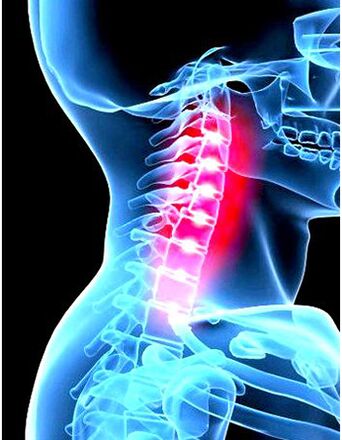
As the disease progresses, the intervertebral disc loses their elasticity and strength, leveling, resting, their amortization has worsened.Such deformation is caused by changes caused by power disorders and tissue reduction.
These violations are one of the natural processes of body aging, but various loads, posture disorders, injuries, congenital abnormalities of the spine and a number of other causes of early clothing and disc.
Pain can have different localization, they can be in the neck, in the occipital region, on the shoulders or upper limbs.Pain in the shoulders or hands occurs when the nerve spine refreshes the top is involved in the process.Pain in the occipital part of the head is caused by neck muscle cramps, which are attached to the occipital bone and circulatory disorders in this zone.
When symptoms occur:
- Decreased sensitivity in the hands occurs when the spine is damaged, which contains sensitive nerves that enhance the skin of the upper limbs.
- Movement restrictions in the cervical spine and crisis during movement occur due to decrease in the height of the intervertebral disc, the appearance of bone growth in the body -vertebral body and damage to the small joints between the cervical vertebra.
- Dizziness, impaired coordination, weakness in cases of severe deterioration with strong deterioration in blood supply to the breakdown of the brain, cerebellum and stems.
- Language numbness, hearing loss and sight
All of these symptoms are caused by the involvement of the vertebral artery in the process, which occurs in its own channel located in the horizontal process of the cervical vertebra.As a result of the development of cervical osteochondrosis, fibrous tissue formation, vertebral vertebrae, blood flow in the artery worsened, which causes deterioration of blood supply to the brain's okipital breakdown and cerebellum.
Cause
- Excessive physical activity in heavy sports or physical labor;
- descent tendency;
- neck hypothermia (walking in winter without a scarf);
- pressure;
- Work on a computer;
- obesity.
Part of the above cause causes osteochondrosis and other spine.
The level of osteochondrosis is determined by the clinical picture and the patient's complaint.The concept of a degree should not be confused with osteochondrosis.The level will be discussed below.
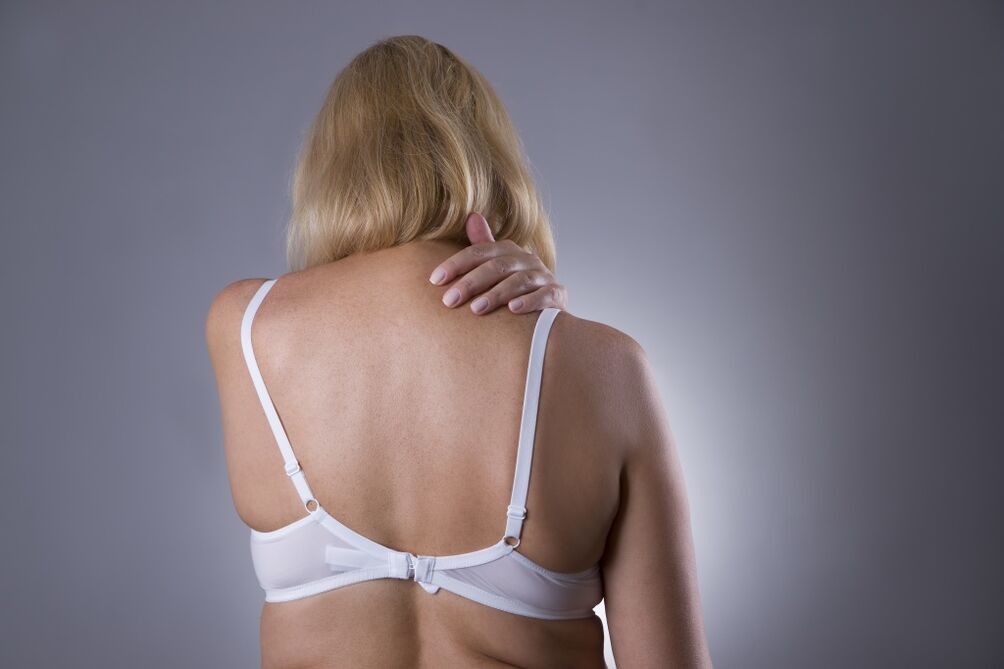
In view of and analyzing procedures for the development of changes in vertebral tissue, doctors distinguish several stages of osteochondrosis of the cervical area:
- Premature phase.The cervical osteochondrosis in the first stage is expressed by the displacement of the pulpoose nucleus to the side and the beginning of the destruction of fibrous rings.Pain during this period may not be present, small lordosis and difficulty in changing or tilting the head are possible.
- Osteochondrosis of the cervical area in the 2nd stage is characterized by increased pathological destruction, the entire instability of the segment with subluxis, and pain occurs, sometimes giving it to the shoulder or arm strap.Patients complain of disorders, memory deterioration and attention.
- Osteochondrosis of the 3rd degree develops with a complete rupture of the fibrous ring.Neurological symptoms arise, sensitivity is disrupted.The pain in the third stage becomes fixed and is very disturbing to the patient.The mobility of the cervical segment is getting worse.
- 4 degree neck osteochondrosis.The final stage of the degenerative process.The intervertebral disc is completely replaced by connective tissue, all symptoms become more noticeable, deterioration in movement coordination, ataxia is observed.
Depending on the localization of pain, the following types of diseases are distinguished: radiculoichemia, cervicobrachialgia, cervicocranial and service.
According to the method, the disease is the custom to divide the acute intervertebrosis osteochondrosis of the neck, which appears for the first and chronic, stretching for years with remission and persistent severity.
Which doctor treats cervical osteochondrosis?
Various symptoms, often hiding under other diseases, cause patients to logical questions - which doctors will be contacted?When any pain in the neck, shoulders and hands or neurotic disorders occur, it is urgent to approach neurologists or vertebrologists.
And to whom to contact if there are no specialists like a local clinic?In this case, the ticket should be postponed to the therapist.The doctor will prescribe treatment or send a narrow specialization to the doctor.
Symptoms depend on damaged vertebrae
Separately, radicular syndrome can be distinguished, leading to one or sensitive and other motor disorders.They vary depending on the type of vertebra that squeezes the root of the spine:
- C1: leading to numbness and impaired sensitivity behind the head;
- C2: pain in the parietal region and back of the head;
- C3: speech deterioration, language sensitivity, pain and decreased sensitivity on the side where the spinal cord is violated;
- C4: heartache, leaving hypochondria, shoulder, shoulder blades, respiratory disorders, decreased neck muscle tone;
- C5: pain in the shoulder outside;
- C6: The pain given from the lower arm to the thumb, as well as from the neck on the shoulder blade;
- C7: pain in the back surface of the shoulder, from the neck to the shoulder blade, giving it to the lower arm to 2-4 fingers;
- C8: pain from neck to shoulder, from lower arm to small finger.
Diagnosis of osteochondrosis
To make a diagnosis, the instrumental examination method is used:
- X -Ray Spinal Department Examination;
- myelography;
- Neurological studies of sensitivity, reflexes.
Additional methods set for differentiation and diagnosis, pathological levels include:
- Tomography calculated spine (CT);
- nuclear-magnetic resonance (jamr);
- Magnetic resonance imaging (MRI).
During the examination by conducting a neurological test, the doctor will assess the level of mobility and neck pain, as well as the affected blood flow to the vertebral artery.
Cervical osteochondrosis requires not only the study of the vertebra itself, but also nearby tissues, blood vessels, nerves.Only then can we evaluate the complete picture of pathological changes that occur as a result of the disease.
Diagnosis of cervical osteochondrosis begins with visual examination and patient survey.Neuropathologists are interested in the life and labor of the patient, the presence of chronic diseases, nutrition and motor activity.
Early diagnosis is confirmed by instrumental research behavior:
- X -ray in two projections;
- MRI;
- Ct;
- UZDS (duplex scanning).
Hormone analysis is required for fairer sex.Without it, the treatment of cervical osteochondrosis in women does not begin.
To exclude pathology with such symptoms, differential diagnosis is made with the appointment of additional consultations with surgeons, gynecologists, cardiologists, eye experts and traditions.
The complications of osteochondrosis
Cervical spinal osteochondrosis is dangerous with complications.With the development of a bad disease, squeezing the spinal artery can lead to brain stroke, which continues to worsen hearing and vision.
Often intervertebral hernia, severe hypertension and numbness or finger cooling join osteochondrosis.In women, complications of neurological properties often develop - persistent fatigue, fatigue, loss of performance, excessive hatred.
Compliance with prescribed treatment, prolonged doctor's avoidance and lack of osteochondrosis therapy contributes to the development of disease and causes the development of new complications, pathologies and diseases, such as:
- Intervertebral disc hernia (spinal hernia);
- protrusion;
- kyphosis;
- radiculitis;
- Salt deposits in the intervertebral space;
- spinal cord stroke;
- reduction of muscle mass of the limbs, muscle atrophy due to affected blood supply;
- lower leg paralysis.
Although the 4th level of osteochondrosis can occur without obvious symptoms and pain, neglected osteochondrosis is the most dangerous for the development of serious complications and can cause patients' defects.
Physical Education Medicine
LFK for cervical osteochondrosis should be done beyond acute anxiety.The biggest effectiveness of this technique during the recovery period.During the implementation of the complex, there is no discomfort and pain!
| Exercise number 1 | Lying on your stomach, resting your hands on the floor, lifting your head and trunk, your back should be straight.Stay in this position for 1-2 minutes.Slowly sink to the floor.Repeat 2-3 times. |
| Exercise number 2 | Lie on your stomach, stretch your arms to the whole body, rotate your head to the left, try touching the floor with your ears, then turn your head to the right.Repeat 6-7 times in each direction. |
| Exercise number 3 | In a sitting position, lean forward, and try to touch your chest with your head, then exhale, lean and remove your head.Repeat 10-15 times. |
| Exercise number 4 | When sitting, place your palms on your forehead, put pressure on your palms on your forehead, and your forehead is on your palm.Continue this exercise for 30 seconds.Repeat 2-3 times. |
| Exercise number 5 | Slowly turn your head first in one direction, then in the other.10 rotations in each direction.Make sure you have no dizziness.When it appears, the training stops. |
Risk factors
Opportunity to get osteochondrosis increases if you have:
- spinal development abnormalities;
- Overweight;
- long physical effort;
- bad habits (smoking);
- SEDENTARI LIFE;
- Work, which implies the effect of vibration on the spine (for example, with a vehicle driver);
- long pressure, excessive nervous tension;
- local hypothermia;
- previous injuries to the neck and nape;
- Autoimmune pathology involves cartilage deterioration.
Psychosomatic
The development of cervical osteochondrosis indicates the inability to survive efficiently.Sometimes people become so strong and confident in their ability that their stability before difficulty turns into rigidity and lack of flexibility.In this case, the attempt to turn their heads is accompanied by stiffness, seizures and other unpleasant sensations.
Also, osteochondrosis can develop in people who are afraid of problems and do not know how to overcome it.In this case, mammalian protective reflexes are triggered, and the head is literally pulled to the shoulder.This provision is considered improper, so after some time, the cervical region muscles begin to hurt and change the shape.
Treatment
Treatment of cervical osteochondrosis depends on the level of the disease.If in the first stage there is a conservative treatment, wandering, then in the second and third stages of the doctor's job is, first and foremost, to stop the pain syndrome.Improved cases may require surgical treatment intended for compression and vertebral stabilization.
Drug
| Band | Information |
| NSAIDs (anti -non -ssteroid drugs) | Helps relieve swelling and pain.The most commonly used drug is a component of acting like sodium diclofenac. |
| Vasodilative medicine | Contributes to increased blood circulation. |
| Sedative, muscle relaxants | They are supplemented to facilitate the general condition of the patient and reduce NSAID doses.Relieves at the same time overstrain nerves and muscle cramps, helping to achieve better therapeutic effects. |
At the end of the therapy course, NSAIDs need to be purchased for the first kit at home, as neck pain can be returned regularly (with stress, overstrain, weather change).Before taking the medicine, consult your doctor.
If the positive effects are not observed after conservative treatment of conservative treatment, doctors may recommend the patient's spinal fussia.
This procedure allows you to disable the affected spinal segment.
The point is to eliminate the intervertebral disc, the declining of the nerve root, the installation of the implant or the creation of the physiological height of the disc space.
This operation has many side effects and contraindications.So it can cause vertebrogenic defects.That is why surgery is performed in extreme cases.
Massage with cervical osteochondrosis allows you to achieve significant improvement.It is important that the procedure is performed by a professional: absurd movements in the cervical spine area can worsen the situation.Movement should affect the collar zone, the cervical region and the back.
Note the training techniques for the treatment of cervical osteochondrosamassage for osteochondrosis implies the replacement of the following actions.
- Encouraging.Masseur affects the surface layer of the skin, moving from the head to the top of the back.At the same time, the palm or the fingertips work.
- Squeeze.The inner layer of the skin located at the top of the back is exposed.In this case, the index and thumb across the neck are carried out to take the skin.The fabric next to the vertebra is not involved in this process.
- Trituration.It is carried out to heat the skin, increasing blood flow to the collar area.This procedure must be done very carefully.It is forbidden to affect the spinous vertebra process.Sometimes scrubbing is replaced with a round shot or movement that resembles a saw.
- Knead.It affects the fabric that is very lying, so it has a limited value.It can worsen the pathology.
During the massage, the patient should lie on his stomach, in cases of extreme, sit down.
Prevention

For the prevention of this disease, it is recommended:
- For spinal health, it is important where the pillow passes to sleep on the pillow and orthopedic mattress;
- Hot bath daily for 10 minutes;
- Visit the bathroom or sauna (relieving neck muscle cramps);
- Avoid sharp tilt and head turn;
- Walking over walking, doing yoga and swimming;
- With "sitting" work, do five -minutes of rest every hour (you need to walk during rest, tilt with body and head in different directions);
- Avoid increasing load on the spine: class heavy, jumping, walking;
- Choose chairs and chairs that support the spine;
- leaving addiction, such as smoking, alcohol abuse;
- Drink at least one and a half liters of water daily.
Eating with cervical osteochondrosis is often recommended (at least five times a day) and in small portions.Priority should be given to steamed or cooked dishes.The salad should be boiled with olive oil.

























